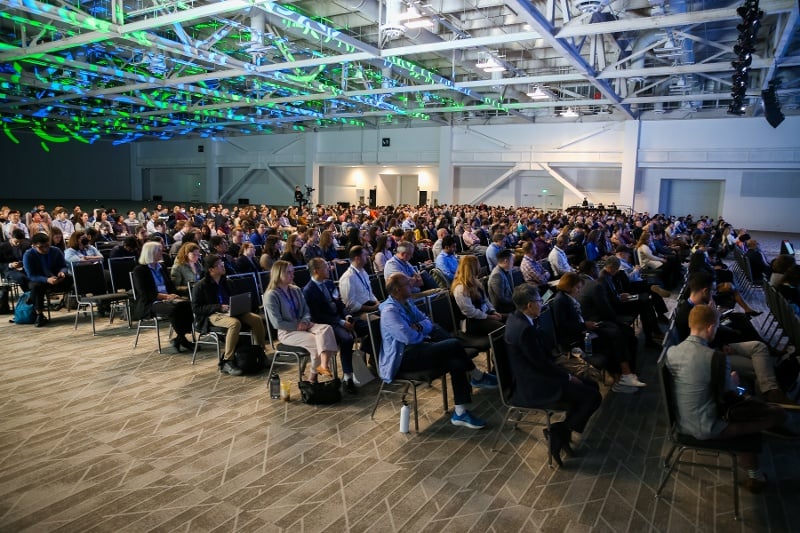Call for Chapter Development Report Reviewers
Want to make an impact? As a CDR reviewer, you’ll evaluate submissions from student chapters and help determine which ones deserve top recognition....
BMES serves as the lead society and professional home for biomedical engineers and bioengineers. BMES membership has grown to over 6,000 members, with more than 160 BMES Student Chapters, three Special Interest Groups (SIGs), and four professional journals.
Welcome to the BMES Hub, a cutting-edge collaborative platform created to connect members, foster innovation, and facilitate conversations within the biomedical engineering community.
Discover all of the ways that you can boost your presence and ROI at the 2024 BMES Annual Meeting. Browse a range of on-site and digital promotional opportunities designed to suit any goal or budget that will provide maximum impact.
A new Northwestern University study has discovered that the packing of the three-dimensional genome structure, called chromatin, controls how cells respond to stress, the university announced.
When the chromatin packing is heterogenous and disordered, a cell demonstrates more plasticity, according to the article. When the packing is neat and orderly, a cell cannot respond as easily to outside stressors.
This discovery comes with both good and bad news, the article states.
The bad news: This means cancer cells with disordered packing are more likely to adapt to and evade treatments, such as chemotherapy. The good news: Now that researchers have this information, they can develop new cancer therapies that target chromatin packing. By inhibiting cancer cells' ability to adapt, those cells become more vulnerable to traditional treatments.
“Cancer cells are masters of change,” said Northwestern Engineering's Vadim Backman, who co-led the research. “They have to continuously adapt to evade the immune system, chemotherapies, or immunotherapies. Abnormal chromatin packing drives cancer cells' ability to do this.” Backman is a BMES member.
The study was published in the journal Science Advances.
Backman is the Walter Dill Scott Professor of Biomedical Engineering in Northwestern's McCormick School of Engineering. He co-led the work with Igal Szleifer, the Christina Enroth-Cugell Professor of Biomedical Engineering, at Northwestern Engineering. Szleifer is also a BMES member.
Made of DNA, RNA, and proteins, chromatin determines which genes get suppressed or expressed. In the case of cancer, chromatin can regulate expression of the genes that enable cells to become resistant to treatment, according to the article.
“Genes are like hardware, and chromatin is software,” Backman said. “And chromatin packing is the operating system.”
“The genome has been sequenced, and techniques, such as CRISPR, now allow researchers to edit a cell's ‘hardware,'” Szleifer added. “The role of chromatin structure on gene expression, however, has remained a scientific mystery.”
To help solve this mystery, Backman, Szleifer, and their teams combined nanoscale imaging technologies with molecular dynamics modeling to analyze nanoscale alterations in chromatin packing structure.
Using data from The Cancer Genome Atlas, they analyzed cells from patients with colorectal, breast, and lung cancers for markers of transcriptional plasticity. The researchers also used Partial Wave Spectroscopic (PWS) microscopy, which previously was developed in Backman's laboratory, to examine chromatin in living cells in real time.
Read more HERE.

Want to make an impact? As a CDR reviewer, you’ll evaluate submissions from student chapters and help determine which ones deserve top recognition....

We’re looking forward to seeing you in San Diego, CA., on October 8-11 for #BMES2025.

We are seeking passionate members to join the prestigious BMES Awards and Fellows committees and play a key role in helping us recognize excellence...

1 min read
Researchers at The University of Texas at Austin have developed new guidelines for fabricating nanoscale gel materials, or nanogels, that can deliver...

1 min read
The Akay Lab biomedical research team at the University of Houston has improved on a microfluidic brain cancer chip previously developed in their...

1 min read
A study on molecular interactions by biomedical engineers in the University of Minnesota's College of Science and Engineering will make it easier and...